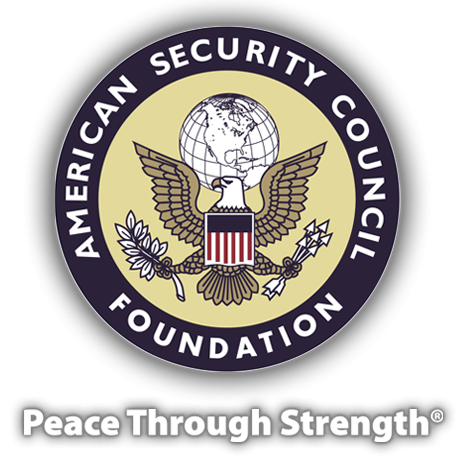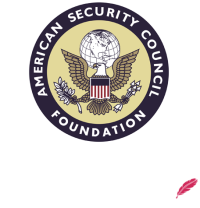New Strategy for a New Era

Our January issue identified the challenges and headwinds on the foreign-policy front President Donald Trump faces as he begins his second term, as well as the tools he has at his disposal to confront those challenges. If Trump wields these tools effectively, he can position America to win Cold War 2.0.
Winning and strength are important to Trump. The following approach to national security—what I call “Free World Defense”—is premised on strength and focused on winning.
Free World Defense is based on a realistic understanding of global engagement.
We hear much about the costs of engagement—and they are high—but never about the costs of disengagement. They are higher: Pearl Harbor in 1941; Korea in 1950; post-Soviet Afghanistan, which birthed the Taliban, which provided safe haven to al-Qaeda, which maimed Manhattan; Iraq in 2011, which spawned ISIS and reopened the Pandora’s Box of chemical warfare; Afghanistan in 2021, which is birthing another generation of nightmares. And we seldom consider the benefits of engagement: Europe transformed from an incubator of war into a partnership of prosperity; Japan and Germany rehabilitated into allies; sea lanes open for commerce; civilization’s enemies kept at bay; great-power war—the norm between 1745 and 1945—prevented for 80 years.
America engages the world—and maintains a military with global reach and global presence—not to go looking for problems, but to address problems before they explode into something unmanageable or unthinkable. That was the lesson of 1941—a lesson too many Americans have forgotten.
Free World Defense is more restrained than the democracy-building projects of recent decades.
Indeed, while Free World Defense would avoid overreach, it would require America to stand with democratic partners. Consider the example of President Harry Truman and President Ronald
Reagan during Cold War 1.0: Truman didn’t try to plant democracy in East Germany. But he did shield and defend West Berlin; he did support European democracies under assault from Moscow; he did launch NATO to defend democratic Europe; he did support fledgling democracies in Japan and West Germany. Likewise, Reagan didn’t dispatch the Marines to plant democracy in Warsaw or Kabul. But he did welcome a democratic Spain into NATO; he did support South Korea, Taiwan and the Philippines as they walked the path from dictatorship to democracy; he did aid those willing to defend their own freedom; he did shore up what he called “the infrastructure of democracy” around the world.
Free World Defense is more expensive but less risky than the approach taken to national security this century.
Building a military capable of deterring aggression carries greater costs up front, but it's far less risky than offering our enemies what Churchill called “temptations to a trial of strength.” And it’s far less costly in treasure and blood than trying to respond to aggression or rescue fallen countries.
Just compare the costs of deterring the Red Army with the costs of Pearl Harbor, Bataan, Normandy, Okinawa, Dresden, Dachau, Auschwitz and Hiroshima.
With an $886-billion defense budget, it might look like America is fully funding its military. But looks can be deceiving. The Army is trying to deter war in Europe with one-third the soldiers it deployed during Cold War 1.0. Navy leaders say they need 500+ ships; they have 296. Just 14 percent of America’s bomber fleet can survive Russia’s or China’s air defenses. The cause of these self-inflicted wounds: For the past 13 years, America has invested around 3 percent of GDP in defense. The average during Cold War 1.0 was more than twice that.
Shifting to a Cold War defense posture by returning to Reagan’s peace-through-strength model will demand bipartisan cooperation and hard choices: Fueled by torrents of domestic spending the past 20 years, the annual deficit tops $1 trillion and the national debt is $32 trillion. Defense spending is not to blame for these fiscal challenges. We could eliminate the entire defense budget, and we would still face a budget deficit.
Some will argue that investing more in deterrence is costly. They’re right. But there’s something far more costly than deterring war: waging war.
Free World Defense means sustained commitments.
A strategy of Free World Defense would deliver a sustained supply of deterrent assets to at-risk democracies. “Freedom must be armed better than tyranny,” President Volodymyr Zelensky of Ukraine observes. When it’s not, the result is Ukraine 2022, Korea 1950, Pearl Harbor 1941, Czechoslovakia 1938. Free World Defense would aim to ensure that Taiwan, the Philippines and the Baltics aren’t added to that list.
Zelensky’s 1-percent concept offers a roadmap: “Give us 1 percent of all your planes, 1 percent of all your tanks,” he challenges the Free World. “It will give us and you 100 percent security.”
This echoes something American leaders have espoused for generations: Truman declared, “It must be the policy of the United States to support free peoples who are resisting attempted subjugation.” Reagan explained, “Support for freedom fighters is self-defense” and “is tied to our own security.”
Helping free nations harden their territory against invasion—which sometimes means deploying U.S. forces as a deterrent—is wiser and less costly in the long term than scrambling to help them try to claw it back. As Reagan declared at Normandy, “It is better to be here, ready to protect the peace, than to take blind shelter across the sea, rushing to respond only after freedom is lost.”
Free World Defense means more helping hands.
The American people—and Trump specifically—have made it clear there’s no longer any room in the Free World for free-riders. The Free World is getting the message.
Whether triggered by Putin’s actions or Trump’s criticisms—probably a little of both—NATO nations are finally serious about the common defense. European nations have sent more aid to Ukraine than has the U.S. Defense spending among NATO’s European members jumped 19 percent last year. Britain is deploying 20,000 troops to defend NATO’s northern flank. Poland is devoting 5 percent of GDP to defense. France is increasing defense spending 40 percent between now and 2030.
In the Indo-Pacific, Japan will soon boast the world’s third-largest defense budget. Australia unveiled a record defense budget in 2024. The Philippines is building up its defenses and opening
up its territory.
Free World Defense recognizes the U.S. alliance system as a force multiplier.
If Americans think it’s difficult and expensive to deter Moscow and Beijing, to protect U.S. interests, to promote U.S. prosperity today—with our transatlantic and transpacific alliances intact—wait until those alliances are gone. There’s a reason Putin has attacked Georgia and Ukraine but not Poland and Estonia. There’s a reason Xi is circling Taiwan but not Japan. There’s a reason the Kim dynasty has blustered the past 72 years about unifying Korea by force but never tried to do so. That reason is the U.S.-led alliance system. America’s alliances are a precious resource to be nurtured, not a liability to be cut.
Far from entangling us in conflicts, our alliances have deterred great-power war and helped us through the conflicts of the post-World War II world. By building up a common defense, specifying clear consequences and clear commitments, and recognizing that America’s security is tied to other parts of the globe, the postwar alliance system surely helped prevent Cold War 1.0 from turning into World War III.
Free World Defense will require more cooperation and more clarity.
A strategy of Free World Defense would engage our allies and draw clear lines for our enemies. Washington has started to do former: standing up AUKUS; modernizing the U.S.-Japan alliance; establishing the U.S.-South Korea Nuclear Consultative Group; working with Manila on new basing agreements; elevating the Quad; reinvigorating NATO and reinforcing NATO’s eastern flank; hardening strategic nodes key to defending the Free World in Guam and Tinian, on islands in the East China Sea, in Baltic territory and Baltic airspace, along the Suwałki Gap, in space and cyberspace.
Next, America and its allies must draw the line against aggression: Free World Defense would make clear that Moscow won’t be permitted to resurrect a dead empire, that Beijing won’t be permitted to build a new empire, that the enemies of civilization won’t be permitted to roll back free government.
Free World Defense will require more tools.
The bad news is that Free World’s defense industrial base is a shell of what it needs to be. The good news is that Congress is hammering out plans for multiyear contracting to incentivize arms manufacturers to make long-term investments. The Navy is mulling partnerships with Japan, South Korea and Singapore to speed repair of U.S. warships. (Trump appears supportive of such partnerships.) Allied nations are collaborating on joint weapons production. NATO members are streamlining purchasing cooperation. U.S. industry is increasing artillery shell production from 14,000 a month before Putin’s war to 70,000 per month by the end of this year. Germany has quadrupled tank-shell production to 240,000 rounds annually. Sweden is quadrupling production of anti-tank systems. Europe’s largest munitions producer will pump out 600,000 shells this year, up from 150,000 in 2022.
Free World Defense would harness more than defense capabilities. Nineteen of the 20 largest tech companies are headquartered in the Free World. The world’s largest lithium deposits are in California, Oregon and Nevada. The U.S. alone possesses more untapped oil than OPEC’s combined reserves, along with vast stores of natural gas. Leveraging all of these resource advantages to defend the Free World and weaken the axis of autocrats is a matter of will.
Free World Defense is a political winner.
Polling reveals that 71 percent of Americans support military aid for Israel, 67 percent support military aid for Ukraine and 65 percent support military aid for Taiwan. Translation: Helping nations that are willing to defend themselves garners overwhelming political support here at home.
The converse also holds: Failing to help democracies in the crosshairs is a political loser. Consider the political fallout at home and abroad that followed the pullout from Afghanistan—a democracy, albeit a fragile one, planted by America. No president—certainly not Trump—wants to be in office with CNN broadcasting images of Russian flags flying over Kiev or PRC generals sauntering through Taipei. Free World Defense will prevent such ugly outcomes.
If Trump can pursue a strategy of Free World Defense, if he can learn from Truman and Reagan, if he can apply the lessons of Cold War 1.0 to today, he will put America and the Free World on a path toward victory in Cold War 2.0. Of course, given some of his predispositions, that’s a big “if.”











